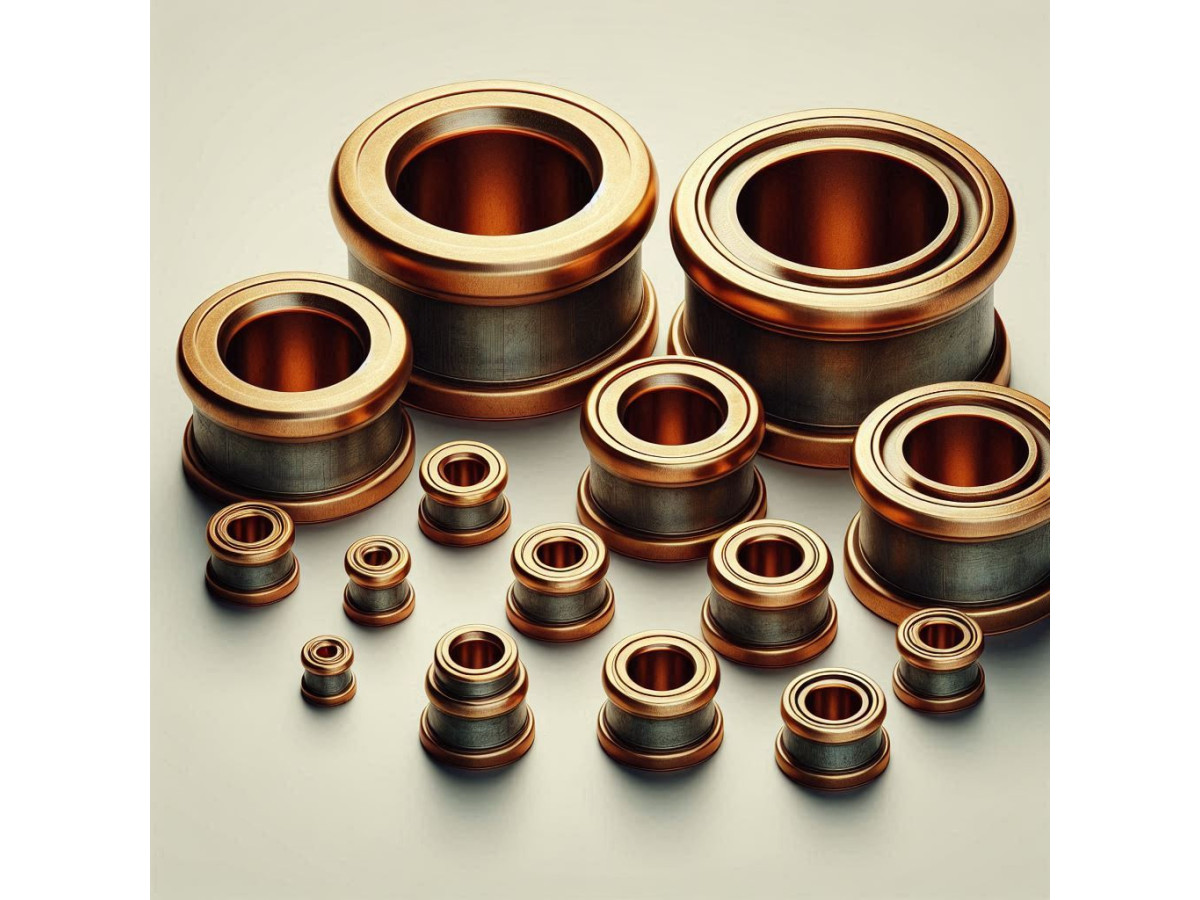We all come across mechanisms that operate smoothly and reliably. But did you know that one of the important parts that ensures the smooth operation of many mechanisms is a bronze bushing? This is a small cylindrical part made of a special copper alloy called bronze. Due to their unique qualities, such products help parts move smoothly and not wear out for a long time. They are used in a variety of devices, from car engines to spaceships.
Manufacturing Features
The production of bronze bushings today is a complex and interesting process that combines ancient traditions and modern technologies. It all starts with the melting of bronze, where copper and tin are added, as well as other elements to impart the desired properties. The molten metal is poured into molds, obtaining bushing blanks, which are then cooled and sent for processing.
At this stage, modern high-precision machines with numerical control come into play. CNC machines turn, mill and grind blanks, giving them the desired dimensions and shape. Then comes heat treatment, which improves the properties of the raw material, making the bushings harder and more wear-resistant. An important point is quality control, which is carried out using ultrasonic and radiographic methods, making it possible to detect even the smallest defects. The final stage is checking for compliance with all standards and requirements. It is at this stage that the high quality and long service life of rolled metal products are guaranteed. For this reason, it is important to order certified products with a passport.
Classification of products
Types of bushings depend on several factors, including the alloy composition, production method, design and area of application. In modern industry, mainly bronze products of the following types are found:
- Tin. They are made of copper and tin alloy, sometimes with the addition of zinc or lead. They are distinguished by excellent wear resistance and good antifriction properties, so they are most often ordered for use in bearings and guides.
- Aluminum. Includes copper and aluminum. The bushings are characterized by increased strength and resistance to rust. They are often found in marine equipment, as well as in environments with high humidity and aggressive substances.
- Manganese. Symbiosis of copper with manganese with the addition of parts of nickel and iron. This rolled metal product also stands out for its excellent strength and resistance to rust, which makes it suitable for severe conditions, including the marine and chemical industries.
- Lead. Made of copper, tin and lead. Lead gives the structures excellent anti-friction properties and good wear resistance. These bushings are often used in bearings operating under high loads and low speeds.
Popular are metal bushings made of phosphor bronze, as well as bimetallic, consisting of two layers - internal bronze and external steel, and self-lubricating, impregnated with lubricants or having built-in lubricating inserts. These bushings provide a low friction coefficient and increase the service life of mechanisms without the need for additional processing.
Benefits of choosing
Bronze is known for its high wear resistance. Bushings made of this metal serve long and reliably, withstanding even the most intense operating conditions. Products of this type are valued for:
- Reduced friction for smooth operation. Bushings are designed to minimize friction between moving parts, which makes the operation of mechanisms smoother and more efficient.
- Protection from oxidation and rust. The material is resistant to moisture and aggressive environments. This quality is especially valuable for bushings operating in marine and chemical conditions.
- Heat management. The raw material has excellent thermal conductivity, which helps to effectively dissipate heat and prevent overheating of mechanisms.
- Power and durability. Bushings made of bronze alloys can withstand the heaviest loads, so they are recommended for use in high-stress conditions.
Autonomous lubrication. Some types of bushings have built-in lubricants, which reduces the need for additional maintenance and extends their service life. Bushings of this type find their place in a variety of industries: from machines and cars to ships and art products. Their versatility makes them indispensable in the modern world of technology and art. The internal diameter usually varies from 10 mm to 500 mm, the external - from 20 mm to 600 mm. The length of the product can reach from 10 mm to 500 mm.

